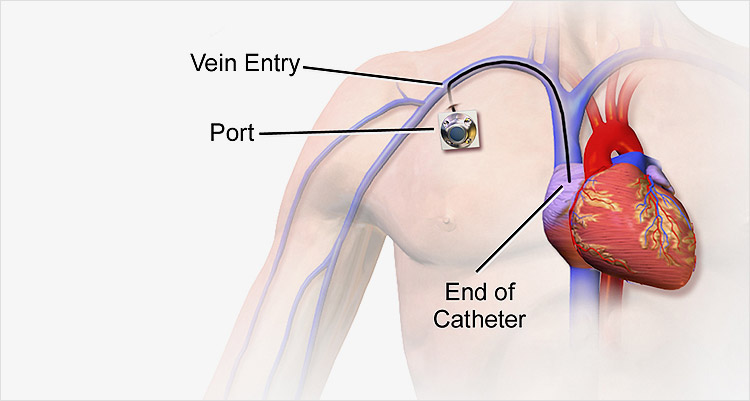Vascular Access
Port A Cath :
A device used to draw blood and give treatments, including intravenous fluids, drugs, or blood transfusions. The port is placed under the skin, usually in the chest. It is attached to a catheter (a thin, flexible tube) that is guided (threaded) into a large vein above the right side of the heart called the superior vena cava. A port-a-cath may stay in place for many weeks or months. A needle is inserted through the skin into the port to draw blood or give fluids. It is also called a port. This avoids the need to have repeated intravenous lines placed to allow for blood tests, infusions, TPN (Parentral Nutrition) , or chemotherapy.
They are inserted either under general or local anaesthetic with X-ray guidance For medical practitioners providing treatment, the port-a-cath makes certain tasks quicker and easier; from the patient’s perspective, this device means that treatment (i.e. injections and blood tests) produce less discomfort in comparison to the typical ‘needle stick’.
A Port removal is a much simpler procedure, done under local anaesthesia, whenever it is no longer needed.










